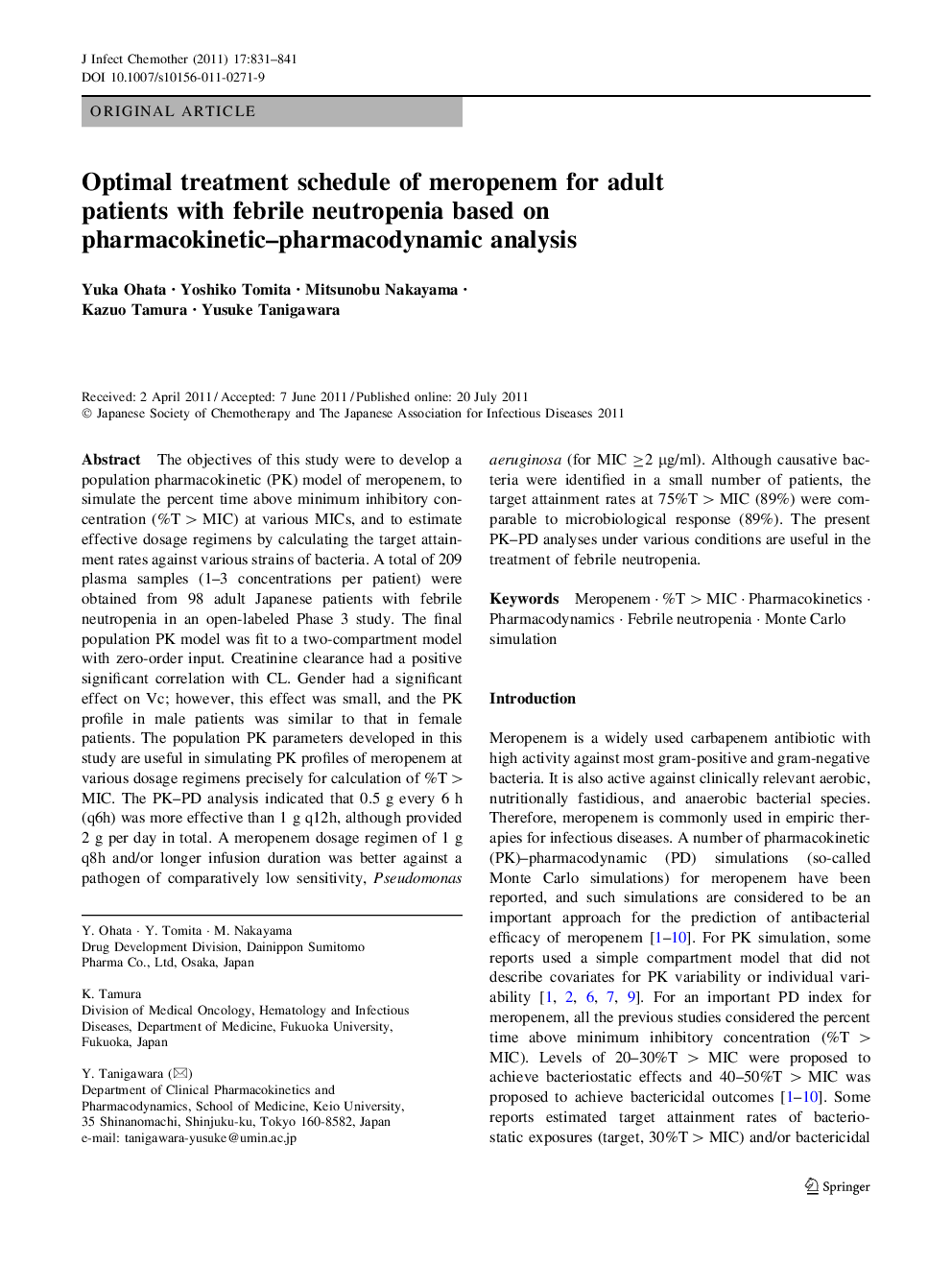| Article ID | Journal | Published Year | Pages | File Type |
|---|---|---|---|---|
| 3377315 | Journal of Infection and Chemotherapy | 2011 | 11 Pages |
The objectives of this study were to develop a population pharmacokinetic (PK) model of meropenem, to simulate the percent time above minimum inhibitory concentration (%T > MIC) at various MICs, and to estimate effective dosage regimens by calculating the target attainment rates against various strains of bacteria. A total of 209 plasma samples (1–3 concentrations per patient) were obtained from 98 adult Japanese patients with febrile neutropenia in an open-labeled Phase 3 study. The final population PK model was fit to a two-compartment model with zero-order input. Creatinine clearance had a positive significant correlation with CL. Gender had a significant effect on Vc; however, this effect was small, and the PK profile in male patients was similar to that in female patients. The population PK parameters developed in this study are useful in simulating PK profiles of meropenem at various dosage regimens precisely for calculation of %T > MIC. The PK–PD analysis indicated that 0.5 g every 6 h (q6h) was more effective than 1 g q12h, although provided 2 g per day in total. A meropenem dosage regimen of 1 g q8h and/or longer infusion duration was better against a pathogen of comparatively low sensitivity, Pseudomonas aeruginosa (for MIC ≥2 μg/ml). Although causative bacteria were identified in a small number of patients, the target attainment rates at 75%T > MIC (89%) were comparable to microbiological response (89%). The present PK–PD analyses under various conditions are useful in the treatment of febrile neutropenia.
